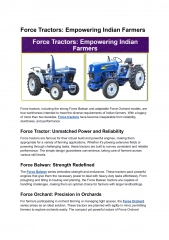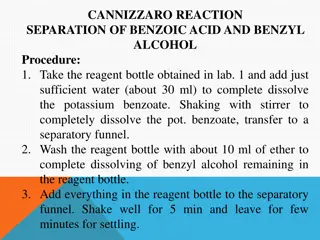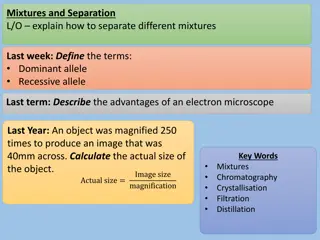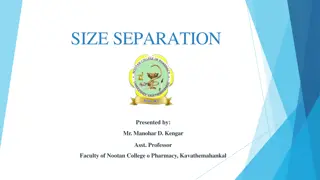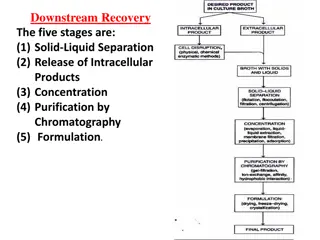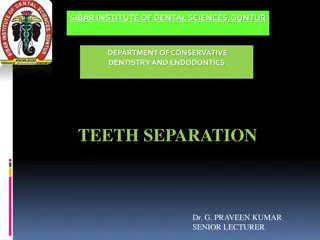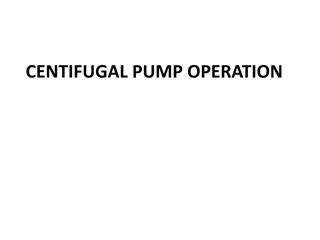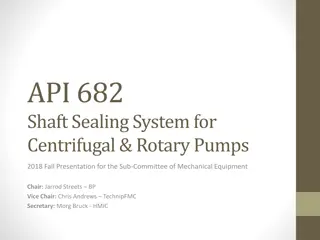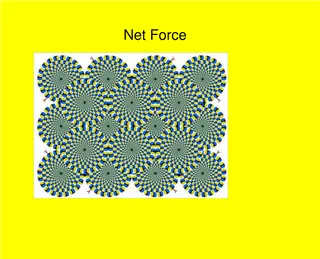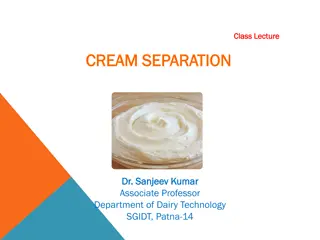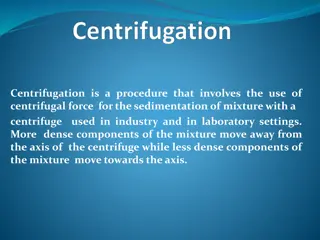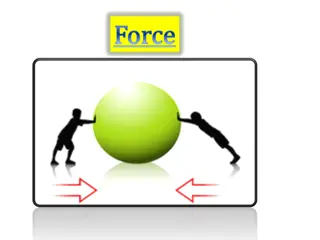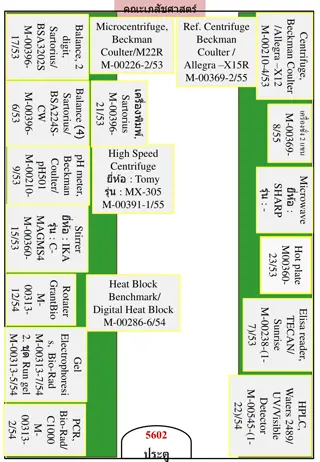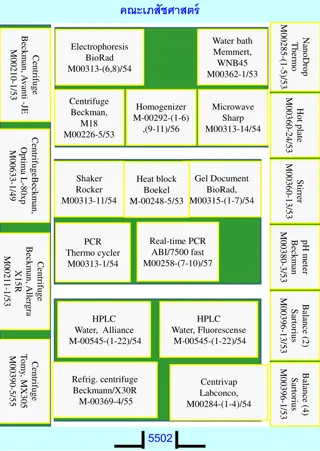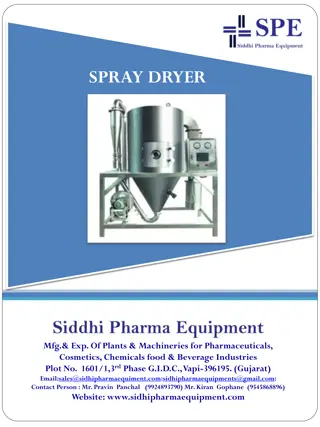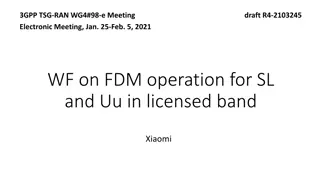Centrifuges and Centrifugal Force in Separation Equipment
Centrifuges play a vital role in separating substances based on different densities using centrifugal force. This force is crucial in the sedimentation of particles, affected by factors like angular velocity and radial distance. Understanding the principles and functions of centrifuges is essential for effective separation processes.
Download Presentation

Please find below an Image/Link to download the presentation.
The content on the website is provided AS IS for your information and personal use only. It may not be sold, licensed, or shared on other websites without obtaining consent from the author.If you encounter any issues during the download, it is possible that the publisher has removed the file from their server.
You are allowed to download the files provided on this website for personal or commercial use, subject to the condition that they are used lawfully. All files are the property of their respective owners.
The content on the website is provided AS IS for your information and personal use only. It may not be sold, licensed, or shared on other websites without obtaining consent from the author.
E N D
Presentation Transcript
Separation Separation equipment equipment Centrifugation
Centrifuges: An apparatus that rotates at high speed and by centrifugal force separates substances of different densities. It is a device to separate and purify a mixture of biological particles in a liquid medium such as proteins and nucleic acids by using centrifugal force.
Centrifugal force (CF): is the tendency of an object traveling around a central point to continue in a linear motion and fly away from that central point at the same velocity and at the same distance from the common center.
Principles work of centrifuges: The basic physics work of centrifuges is gravity and generation of the centrifugal force (G) to sediment different fractions. Centrifugal field (G) depends on : 1-Angular velocity (w) in radians/sec. 2-Radial distance (r) in cm of the particle from the axis of rotation.
Rate of sedimentation : Depends on - factors other than CF Mass of particle ---Density & Volume Density of medium Shape of particle Friction
Sedimentation time Depends on: 1. Size of the particle. 2. Density difference between particle and medium. 3. Radial distance from the axis of rotation to the liquid meniscus (rt). 4. Radial distance from the axis of rotation to the bottom of the tube (rb)
Parts and Functions : 1-Electric Motor: Head rotation (to spin the sample). 2-Head: A test tube holder 3-Timer: Adjust time for sample separating. 4-Tachometer: Adjust rpm. 5-Brake: For speeding of centrifuge stopping 6-Temperatures Controls Keys: For adjust temperatures degrees 7-Green or red color keys: To work and stope. 8-Cover: Protected
Types of Centrifuges: 1- Desk top centrifuges 2- High speed centrifuges . 3- Ultracentrifuges .
Applications of centrifuges 1- cell free plasma or serum Remove cellular elements from blood to provide for analysis 2- Isolate chemical precipitated protein from an analytical specimen 3-Separate protein bound from free ligand in immunochemical . 4-Separate lipid components.
Use and care of centrifuges . 1- Reading the manufacturer s instructions. 2- Placing a centrifuge on a firm level bench out of direct sunlight. 3- Whenever possible using plastic tubes made from polystyrene or autoclavable 4-Closing the centrifuge top before turning it on 5- Always balancing the tubes that are being centrifuged, tubes of the same weight should be placed directly opposite to each other.


